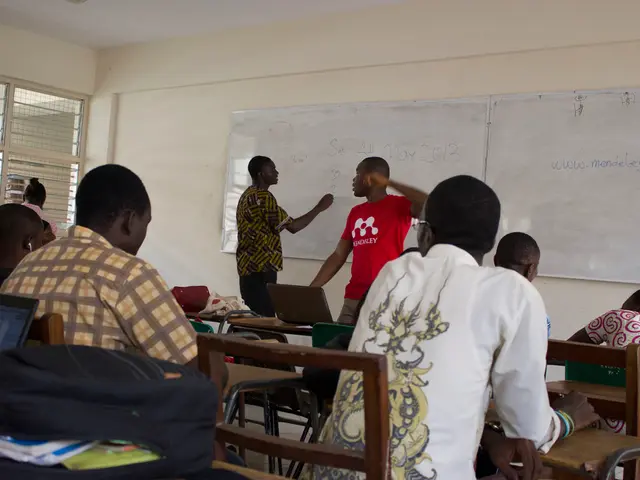Cluster Sampling 101: The Ultimate Guide
Examining Cluster Sampling Technique and Its Illustrative Applications
Dive into the world of Cluster Sampling, a popular probability sampling method, and learn everything you need to know.
Unleashing the Power of Cluster Sampling
Cluster sampling simplifies life when dealing with large, geographically dispersed populations. The method focuses on groups, which makes it distinct and incredibly useful. Here's the scoop:
Cluster sampling separates the population into distinct clusters. Instead of targeting individuals, researchers choose these clusters, using either simple random or systematic sampling methods. Within each cluster, elements can be either studied comprehensively or targeted for additional sampling, depending on the researcher's preferences.
Advantages and Disadvantages - The Good, the Bad, and the Ugly
Pros:
- Cost-Effective: Compared to other sampling methods, cluster sampling is generally more affordable.
- Time-Efficient: Efficiency is key. Cluster sampling reduces the time spent on data collection.
- Practical Implementation: Useful in real-world scenarios, cluster sampling is simple to execute.
- Geographical Convenience: When it comes to travel costs, cluster sampling significantly cuts down on them.
- Flexibility: Both single-stage and multi-stage approaches are possible.
- Reduced Resource Requirements: Cluster sampling demands less effort in administration.
- Simplified Administration: Clustered samples make management a breeze.
- Better Response Rates: Research participants are often more accessible within a cluster.
- Natural Groupings: Cluster sampling uses existing organizational structures.
- Scalability: Cluster sampling can handle various population sizes.
Cons:
- Increased Sampling Error: Cluster sampling tends to produce higher sampling errors compared to simple random sampling.
- Potential Sampling Bias: Bias may occur if clusters aren't representative or aren't selected randomly.
- Complex Statistical Analysis: More complex statistical analysis is required to account for the cluster effect.
- Risk of Cluster Effect: The impact of this effect must be understood when interpreting results.
- Possible Underrepresentation: Certain groups may not be adequately represented in the sample.
- Limited Control Over Individual Selection: No control is had over individual selection within the cluster.
- Need for Careful Cluster Definition: How clusters are defined can significantly impact the sample's representativeness.
Heading into Battle: Cluster Sampling vs. Other Sampling Methods
When comparing systematic sampling vs cluster sampling, it's essential to recognize that they serve different purposes in research methodology. While systematic sampling selects elements at fixed intervals, cluster sampling focuses on groups. Systematic sampling may be more suitable for smaller populations, while cluster sampling shines when dealing with large, dispersed groups.
Dialing in the Perfect Technique
The key to a great research project is selecting the appropriate technique based on your research objectives:
- Simple random sample when each element has an equal chance of selection.
- Systematic sampling when a fixed interval is preferred.
- Cluster sampling when you're working with large, dispersed populations.
- Adaptive cluster sample for rare or unevenly distributed populations.
- Non-probability sampling when probability methods aren't feasible.
Remember to consider factors like distribution, resource availability, geographic dispersion, time constraints, and required precision when making your selection.
Real-life Cluster Sampling Applications
- Educational Research: Analyze performance, evaluate teaching methods, and assess resource allocation.
- Market Research: Investigate shopping behaviors, study consumer preferences, and test products.
- Health Surveys: Assess disease prevalence, evaluate public health initiatives, and measure healthcare access.
- Social Studies: Study community behaviors, conduct demographic research, and investigate social trends.
Wrapping Up: Mastering Cluster Sampling
Get your research on the right path with cluster sampling. Here's your step-by-step guide:
- Define the Population and Sampling Frame.
- Divide the population into clusters.
- Select clusters using simple random sampling or systematic random sampling.
- Choose between single-stage cluster sampling or multi-stage sampling.
- Collect data from the elements within each cluster.
- Analyze the results, taking the clustering effect into account.
- Validate your sampling process and account for potential bias.
- Document the methodology.
- Report findings, always considering the cluster effect.
This How We Roll: Taking Care of Your dissertation
Tackle your dissertation like a boss with the help of Best Dissertation Writers. Our expert team of PhD-qualified writers is here to provide assistance, from research methodology to final editing. Take the first step toward success and reach out today!
- In the realm of education and self-development, cluster sampling can be beneficial for dissertation research, especially when investigating large, geographically dispersed groups of students and their medical-conditions, or when evaluating health-and-wellness programs, learning styles, or fitness-and-exercise habits.
- For a science project focusing on medical-conditions, cluster sampling can simplify the research process by targeting groups of individuals instead of each individual, making it more cost-effective and time-efficient.
- Researchers studying the impact of health-and-wellness programs in the context of science may find cluster sampling advantageous, as it can help to examine organic groupings within the population, such as schools or community centers, which are convenient for practical implementation and geographical convenience.








